Today I'd like to invite you to take a tour in the art world of Alexandru Vlasin, an amazing contemporary artist, who's painting style can take you back to a very different century. While looking at the fantastic artworks, I was thinking one must really love and know those times, otherwise it's impossible to adopt this style, that was used centuries ago.
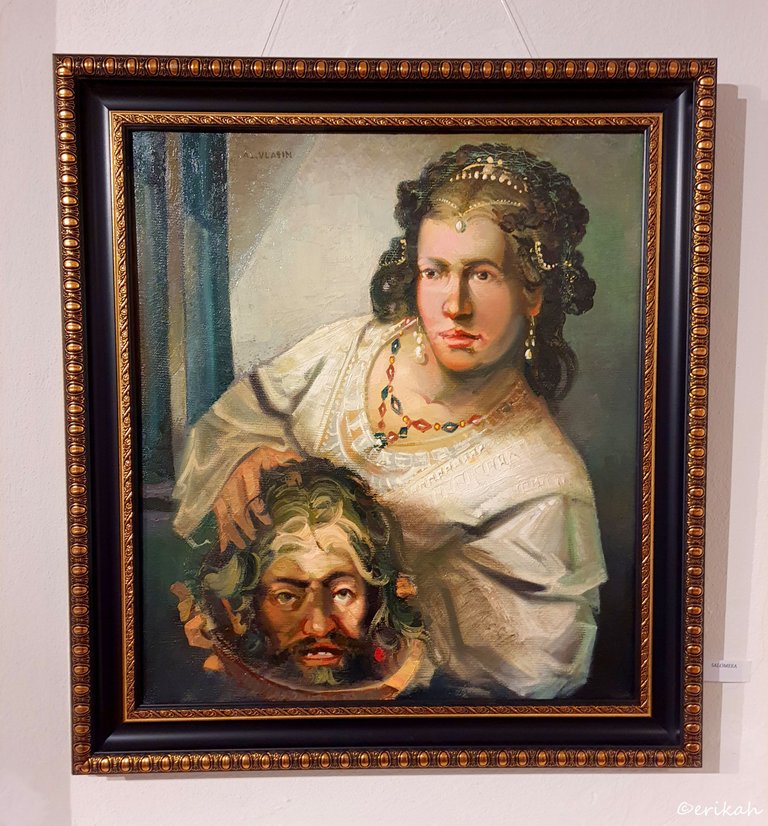
Salome
Hive user base consists in people of different religions, so I think it's better to share who Salome is, for those who are not familiar with the character.
Salome, also known as Salome III, was a Jewish princess, the daughter of Herod II, who was the son of Herod the Great, with princess Herodias. She was granddaughter of Herod the Great, and stepdaughter of Herod Antipas. She is known from the New Testament, where she is not named, and from an account by Flavius Josephus. In the New Testament, the stepdaughter of Herod Antipas demands and receives the head of John the Baptist. According to Josephus, she was first married to her uncle Philip the Tetrarch, after whose death (AD 34) she married her cousin Aristobulus of Chalcis, thus becoming queen of Armenia Minor.
The gospel story of her dance at the birthday celebration of her stepfather, who had John the Baptist beheaded at her mother's request, inspired art, literature and music over an extended period of time. Among the paintings are those by Titian and Gustave Moreau. Oscar Wilde's 1891 eponymous play, and its 1905 operatic setting by Richard Strauss, are among the literary and musical realisations which endeavoured to portray her. She also appeared in film, for instance in a 1953 Salome film starring Rita Hayworth in the title role. source
Salome as a biblical character is not new to me, however, I don't think I've ever seen her on canvas before. As you can see above, there were many artists depicting her, among which two well known ones, like Titian and Gustave Moreau. The most interesting thing would be, to compare those paintings featuring Salome and see which artist's imagination suits your taste. Curiosity is what makes you educate yourself, so I ran a search and here's Titian's Salome, made around 1550, currently the property of the Museo del Prado in Madrid. Salome is holding the head on a (most likely) silver plate. And here's Gustave Moreau's Salome from mid to late 19th century. Salome is Dancing around the head.
While the above mentioned two artworks are focusing on the main character from a far perspective, Alexandru Vlasin depicted Salome from close, focusing more on the details. Now taking a step back and looking at it from the owner's perspective, trying to vision how it would look on the wall, it's a bit scary, but still amazing. I love it. Look at how detailed the painting is when you focus on Salome's dress and accessories, not to mention the facial expression of John the Baptist.

I didn't take a photo of the label of this painting, or there was none, I don't know what happened. In fact it doesn't matter as the main focus in on the canvas and this is a very interesting one for a good reason.
If you look at the lady's face, you'll notice that she's not exactly the standard beauty you usually see on paintings, due to her nose and her lipstick is a bit irregular too. For me this is not a negative thing, on the contrary. It reminds me of Auguste Rodin, who was made to suffer for refusing to make his sculptures to fit the likes and the expectations of the society and instead he chose to illustrate reality (the human body as it is to be precise). You had to be brave to go against the trend and Rodin paid a high price for doing what he thought was right as his sculptures were rejected by the Société year after year. So this lady may not be the beauty people are usually looking for, symmetry is missing to some degree, but that's the beauty of the artwork in my opinion.
And now that I touched the subject anyway, let me share what I think about the paintings of famous people back in those centuries when photography was not invented yet. Imagine royals and nobles commissioned their portraits quite often as that was the only form of keeping their face and memory alive. These paintings had to fit their taste, rather than correspond to reality. The painter who did not comply with the requirements, was playing with his life as he could be beheaded. Now you can imagine how lifelike those paintings we have today are :)
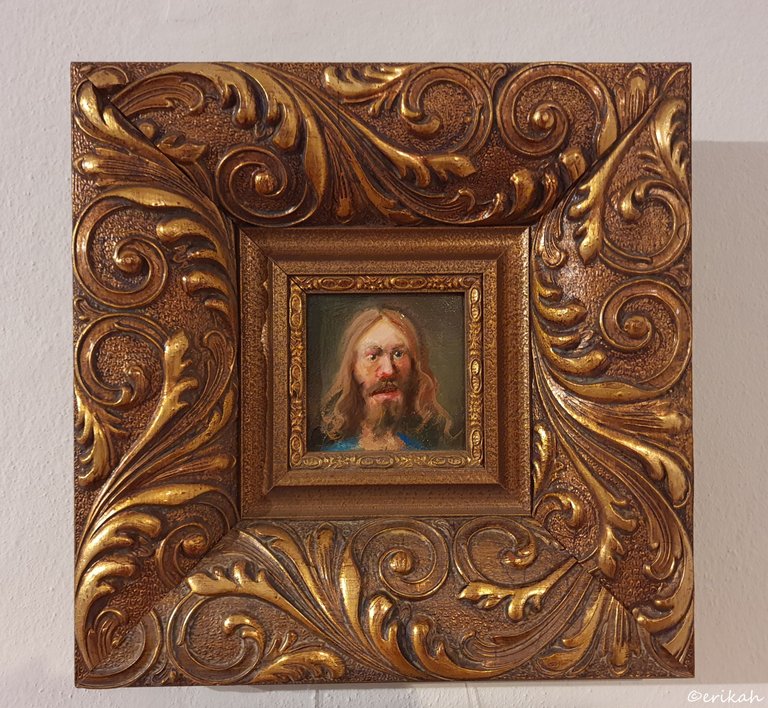
This was an interesting one, for the obvious reasons. I think the frame exceeds the size of the canvas like five times, but this is not a disadvantage in my eyes. Most likely it's a painting of a simple, village man.
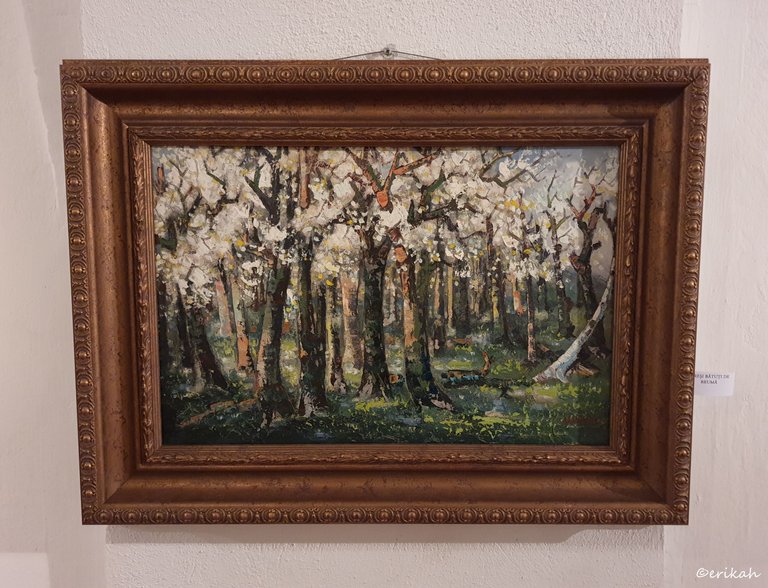
Cherries Beaten By Frost
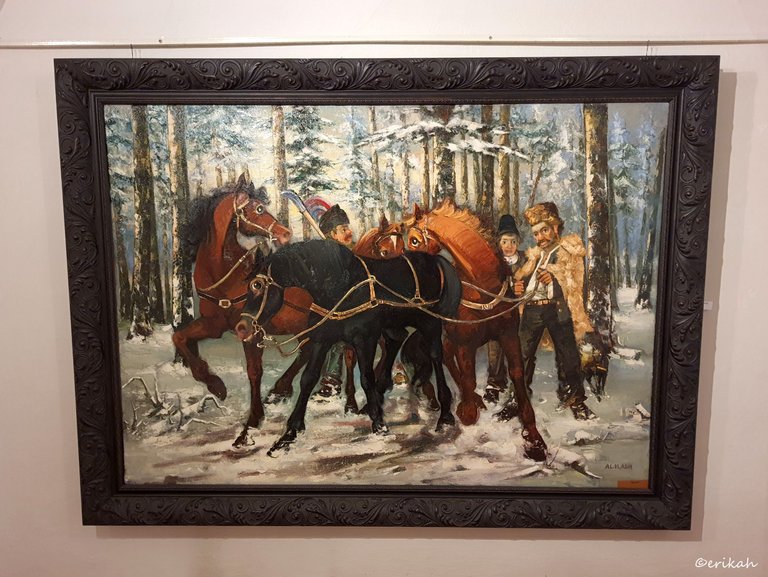
Lumbermen
This was another lovely painting, showing how lumbermen were working once, using horses as these animals were the only means of transportation. The colors are lovely and what makes it unique is the dynamic aspect of the painting.
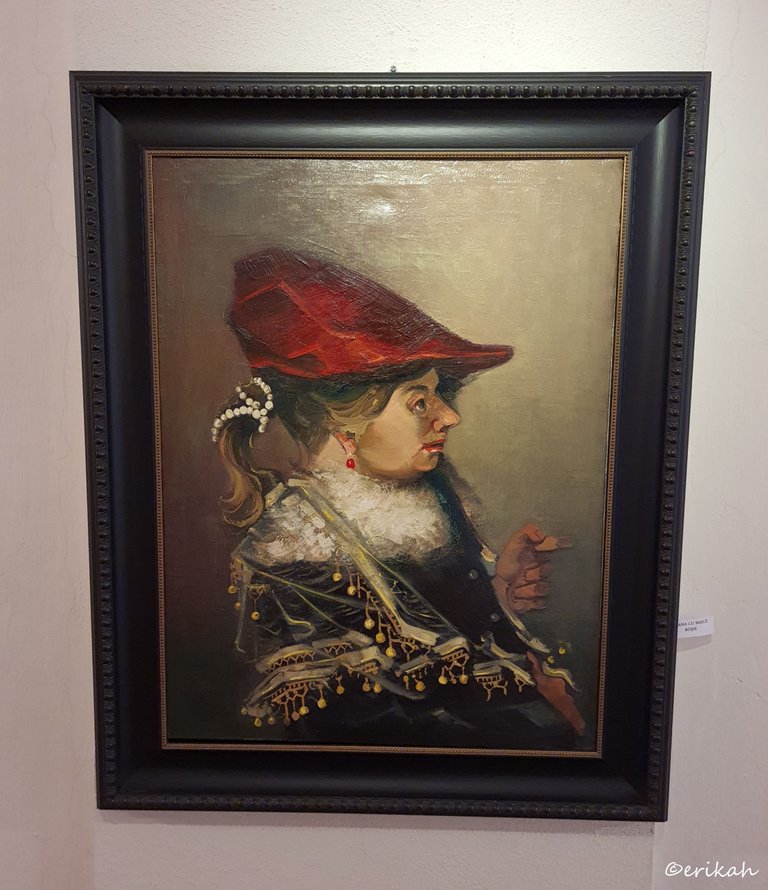
Ioana With Red Beret
Ioana, the lady in the painting I believe is the wife of the artist. What I love about this painting is that just like with the other characters, he teleported her in a different century (18th, 19th I suppose), by dressing her up according to those eras' fashion. It's a brilliant one.
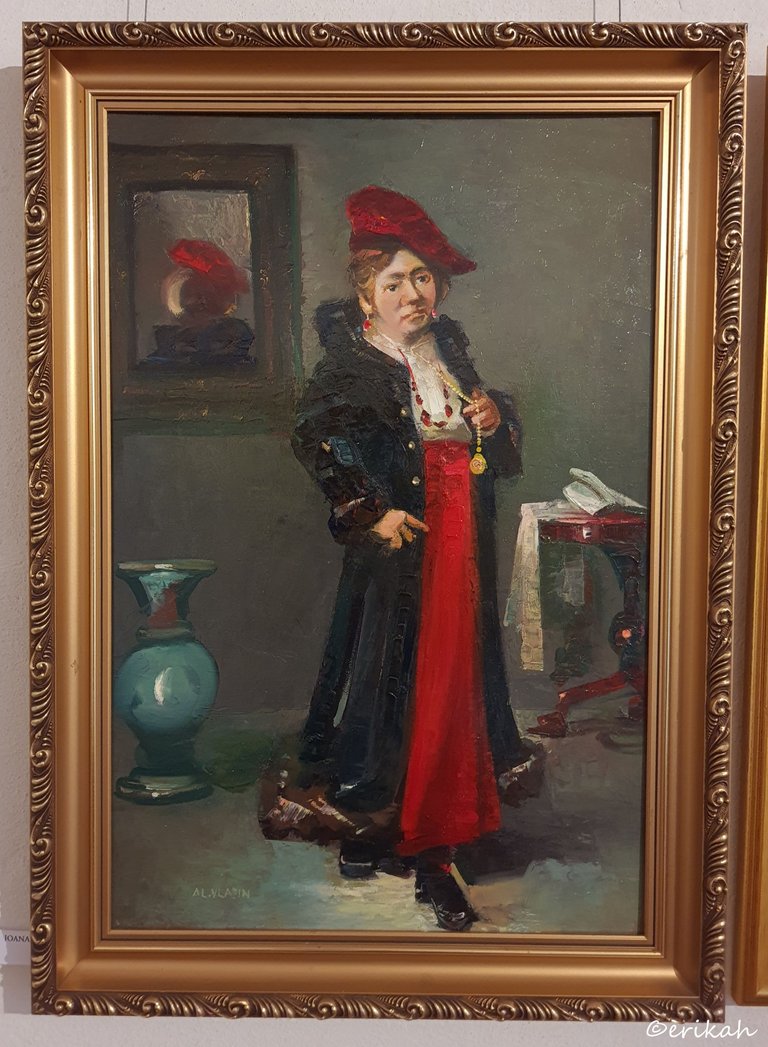
Ioana
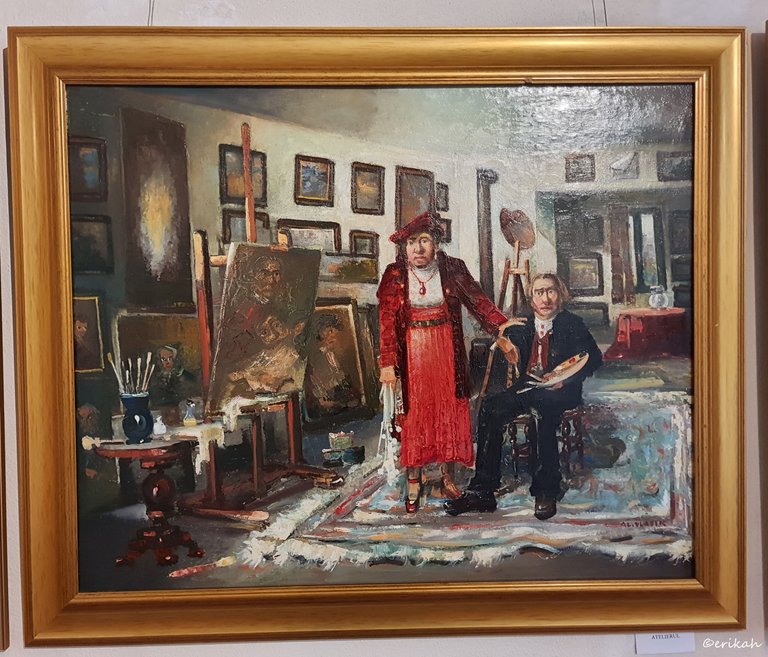
The Workshop
Ioana with the artist himself in the workshop.
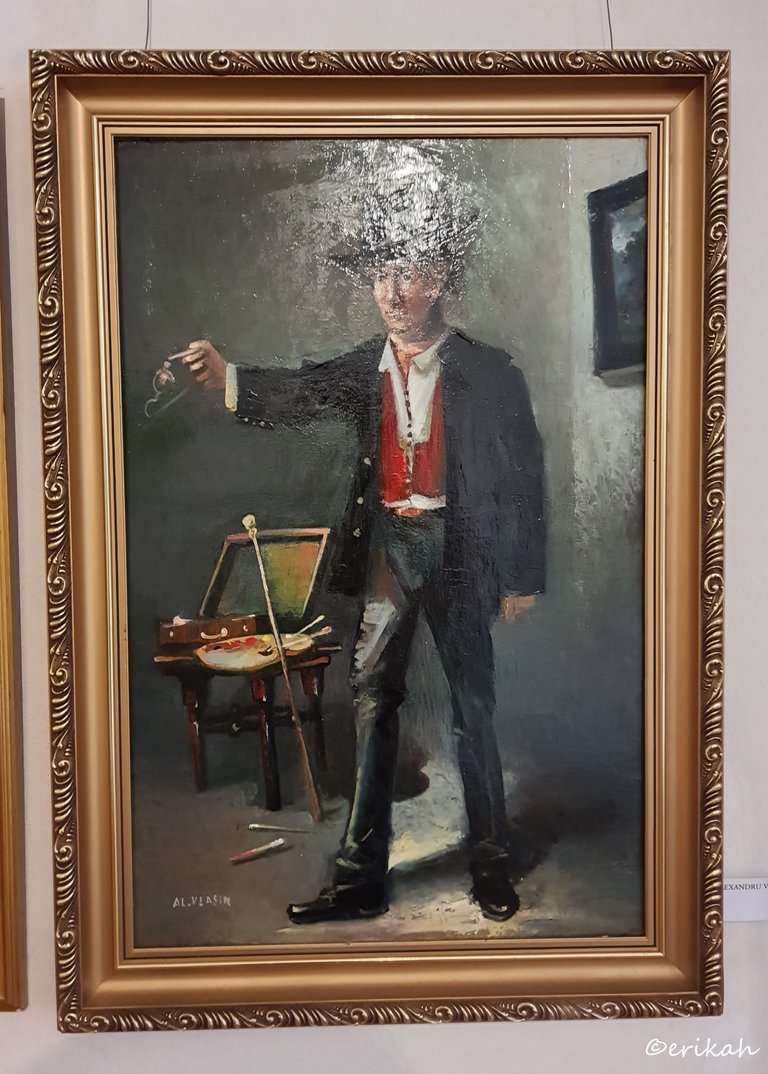
Alexandru Vlasin
This is an self portrait. Unfortunately oil paintings and reflections don't go well together.
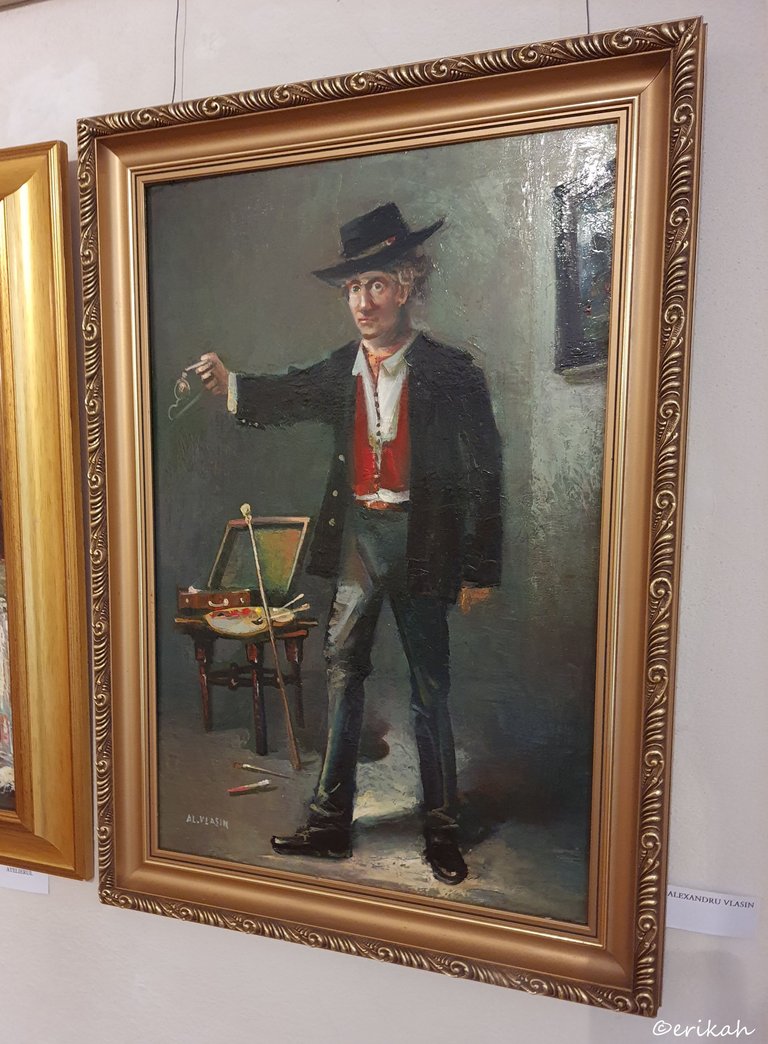
I took another shot from a different angle.
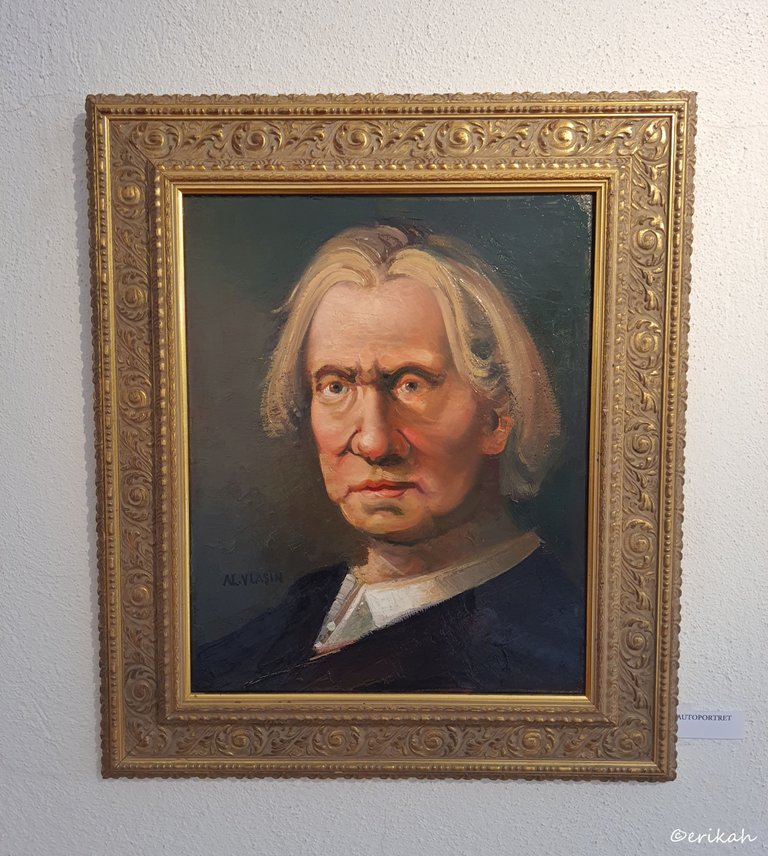
Self Portrait
It's always a pleasure to look at these paintings, not to mention that none of these are for sale. I can consider myself lucky.

If you're a newbie, you may want to check out these guides:
- Communities Explained - Newbie Guide
- Cross Posting And Reposting Explained, Using PeakD
- Hive Is Not For Me
- How To Pump Your Reputation Fast - Newbie Guide
- Tips And Tricks & Useful Hive Tools For Newbies
- More Useful Tools On Hive - Newbie Guide
- Community List And Why It Is Important To Post In The Right Community
- Witnesses And Proposals Explained - Newbie Guide
- To Stake, Or Not To Stake - Newbie Guide
- Tags And Tagging - Newbie Guide
- Newbie Expectations And Reality




